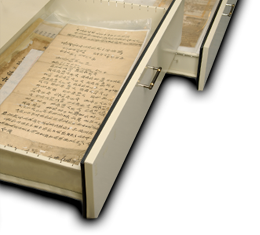|
1. Commencement of Port Construction in 1931 The cause for a port to be constructed in eastern Taiwan with local Japanese capital had been unsuccessful after years of campaigning due to government policy and fiscal austerity. It was not until the Government-General of Taiwan suspended the southward expansion policy and opened instead the Taitung Line, thus attracting development resources and Japanese-funded investment to eastern Taiwan that port construction became the focus of the subsequent infrastructure development. In 1930, the Transportation Bureau of the Government-General of Taiwan formulated a five-year survey plan on all harbors island-wide. Survey on the harbors in Hualien was completed in the same year. According to the findings, the site chosen for port construction was near Milun (the present-day Meilun). Strong breakwaters were to be built along the shoreline and sediments near the land were then dredged before seawater was allowed to flow into the harbor. Artificial harbor constructed in such a way first appeared in Japan in 1951, two decades after the commencement of port construction at Hualien, evidencing the advanced technological standard at that time. In 1931, the National Diet of Japan approved the budget for building Hualien Port, with the total cost exceeding 7.42 million yen. The construction would take 7 years. On the day when the construction commenced, government officials and citizens paraded the streets with cheer, eagerly anticipating the completion of the new port.
Figure 9 Summary of the port construction plan and floor plan of the port in 1935
The then Hualien Port had an annual cargo throughput of 200,000 tons, and three wharves where three 4,000-ton ships could dock at the same time. Construction of this unique artificial harbor involved dredging by steam shovels. The rocks and sediments excavated were then transported by dozens of trucks and hundreds of coolies. Eastern Taiwan Prospect, a book edited by Mori Yukitoshi (毛利之俊) in 1935 contains precious photos of eastern Taiwan when Hualien Port was built, and of the ongoing construction at that time.
Figure 10 A distant view of the port construction site from the harbor railway line (臨港線鐵道)
Figure 11 A new dyke constructed near the old Eguchi Breakwater
Figure 12 Coolies working at the construction site of Hualien Port
Figure 13 Selected western painting Crane by Kawamura Koichi for the Ninth Taiwan Art Exhibition in 1935 Figure 14 A 1939 report on the forthcoming regular Keelung-Hualien shipping route
Source: The Taiwan Shinminpo No. 3073 (1939-08-20), Records of The Taiwan Shinminpo (T1119), 1938.
Figure 15 Arrival of Wuchang Maru at Hualien Port Figure 16 Governor-General Kiyoshi Hasegawa inspecting the second phase of Hualien Port construction in 1943 |
 |












